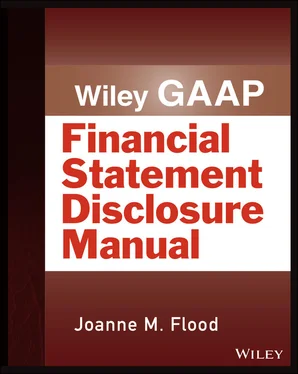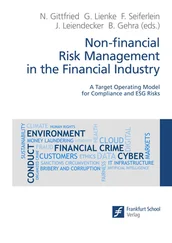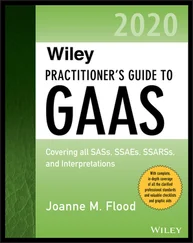A transaction that, if recorded, changes a profit to a loss or changes compliance with ratios in a debt covenant to noncompliance,
A transaction that might be judged immaterial if it occurred as part of routine operations may be material if its occurrence helps meet certain objectives. For example, a transaction that allows management to achieve a target or obtain a bonus that otherwise would not become due would be considered material, regardless of the actual amount involved.
Offers to buy or sell assets for more or less than book value, and
Litigation proceedings against the company pursuant to price‐fixing or antitrust allegations, and active negotiations regarding their settlement.
Degree of PrecisionAnother factor in judging materiality is the degree of precision that may be attained when making an estimate. For example, accounts payable can usually be estimated more accurately than a possible loss from the incurrence of an asset retirement obligation. An error amount that would be material in estimating accounts payable might be acceptable in estimating the retirement obligation.
DISCLOSURE AND PRESENTATION REQUIREMENTS
This topic has no disclosure and presentation Subtopics.
2 ASC 205 PRESENTATION OF FINANCIAL STATEMENTS
1 Authoritative LiteratureSubtopics Scope and Scope Exceptions ASC 205‐10 ASC 205‐20 ASC 205‐30 ASC 205‐40
2 Practice Alert
3 Disclosures and Presentation RequirementsASC 205‐10, Overall Comparative Statements Full Set of Financial Statements Order of Data Changes Affecting Comparability Presentation Disclosure ASC 205‐20, Discontinued Operations Determining When a Disposal Should Be Presented as a Discontinued Operation Presentation—Income Statement Presentation—Balance Sheet Disclosures for Assets Sold or Held for Sale Change to a Plan of Sale Continuing Involvement Disclosures Required for a Discontinued Operation Comprising a Component or Group of Components of an Entity Disclosures Required for a Discontinued Operation Comprising an Equity Method Investment ASC 205‐30, Liquidation Basis of Accounting Determining When to Apply the Liquidation Basis of Accounting Measuring Assets and Liabilities Presentation Disclosure ASC 205‐40, Going Concern Overall Guidance Consideration of Management's Plans Disclosure Requirements
4 Presentation and Disclosure ExamplesExample 2.1: Reclassification Example 2.2: Income Statement Presentation for Discontinued Operations—Face of the Income Statement Example 2.3: Computing the Gain or Loss on Disposal in the Year in Which the Discontinued Operation Is Classified as Held for Sale Example 2.4: Discontinued Operations—Adjustment of Loss Repeated in a Prior Period as a Discontinued Operation Example 2.5: Discontinued Operations Reporting—in Periods after the Sale, Including Adjustment for Contingency Example 2.6: Discontinued Operations—Note Disclosure in Years Subsequent to the Year in Which the Discontinued Operation Was Classified as Held for Sale Example 2.7: Discontinued Operations—Note Disclosure in Years Subsequent to the Year in Which the Discontinued Operation Was Classified as Held for Sale Example 2.8: Note—Discontinued Operation—Not a Strategic Shift Example 2.9: Basis of Presentation—Liquidation Basis of Accounting Example 2.10: Statement of Net Assets in Liquidation Example 2.11: Statement of Changes in Net Assets in Liquidation Example 2.12: Note—Liquidation Is Imminent Liquidation of Company Plan of Liquidation Financial Statement Presentation Adoption of the Liquidation Basis of Accounting Accrued Liquidation Costs Example 2.13: Liquidation Is Not Imminent Organization and Nature of Business Example 2.14: Going Concern—Substantial Doubt Remains—Contingent on Raising Capital Example 2.15: Going Concern—Substantial Doubt Remains—Contingent on Obtaining Financing Example 2.16: Going Concern—Substantial Doubt—Management's Plans
AUTHORITATIVE LITERATURE
Subtopics
ASC 205, Presentation of Financial Statements , is divided into four subtopics:
ASC 205‐10, Overall
ASC 205‐20, Discontinued Operations
ASC 205‐30, Liquidation Basis of Accounting
ASC 205‐40, Going Concern
Scope and Scope Exceptions
ASC 205‐10The guidance in ASC 205‐10 applies to:
All subtopics in ASC 205‐10 unless explicitly excluded
Business entities and not‐for‐profit entities(ASC 205‐10‐15‐1)
ASC 205‐20The guidance in 205‐20 applies to either:
A component of an entity or a group of components that is disposed of or is classified as held for sale, or
A business or nonprofit entity that, on acquisition, is classified as held for sale.(ASC 205‐20‐15‐2)
The guidance does not apply to oil and gas properties that use the full‐cost method of accounting prescribed by the SEC. (ASC 205‐20‐15‐3)
ASC 205‐30ASC 205‐30 does not apply to companies registered under the Investment Company Act of 1945. (ASC 205‐30‐15‐1)
ASC 205‐40ASC 205‐40 applies to all entities. (ASC 205‐40‐15‐1)
While SEC comments pertain to public entities, their comments can provide valuable practice pointers for nonpublic entity financial statement preparers. In the areas covered in this Topic, the SEC has commented in recent years that preparers should consider carefully:
Why current earnings before taxes and depreciation are not comparable to the corresponding prior period measures due to the reclassifications of devices from inventory to property, plant, and equipment and the lack of inclusion of periodic depreciation expenses related to equipment leasing revenue.
Whether the operations they have disposed of meet the criteria to be accounted for as discontinued operations.
Whether the discontinued operations meet the criteria for classification as a component or group of components of an entity, or an entity that represents a strategic shift that will have a major effect on the entity's operations and financial results and meets the other criteria in ASC 205‐20‐45‐1B.
Whether the assets classified as held for use meet the criteria in ASC 360.
Why the entity's expected sale of a component is not reflected as held for sale and discontinued operations.
Whether assets held for sale or disposal were tested for impairment in prior periods or in the current period.
The factors used to present, or not present, assets held for sale separately on the statement of financial position,.
The timeline of events leading to an asset sale.
Why gain or loss on a sale of the disposition is not disclosed.
Known trends, events, or uncertainties that are reasonably likely to impact future liquidity and/or going concern.
Preparers would be prudent to document their conclusions on any of the above items.
DISCLOSURES AND PRESENTATION REQUIREMENTS
ASC 205‐10, Overall
Comparative StatementsTo increase the usefulness of financial statements, many entities include financial statements for one or more prior years in their annual reports. Some also include five‐ or ten‐year summaries of condensed financial information. While not required, ASC 205‐10‐45‐1 emphasizes that the presentation of comparative financial statements in annual reports enhances the usefulness of such reports and brings out more clearly the nature and trends of current changes affecting the enterprise. Comparative presentations demonstrate the fact that the statements for a series of periods are far more significant than those for a single period and that the accounts for one period are but an installment of what is essentially a continuous history.
Читать дальше












